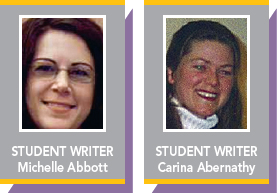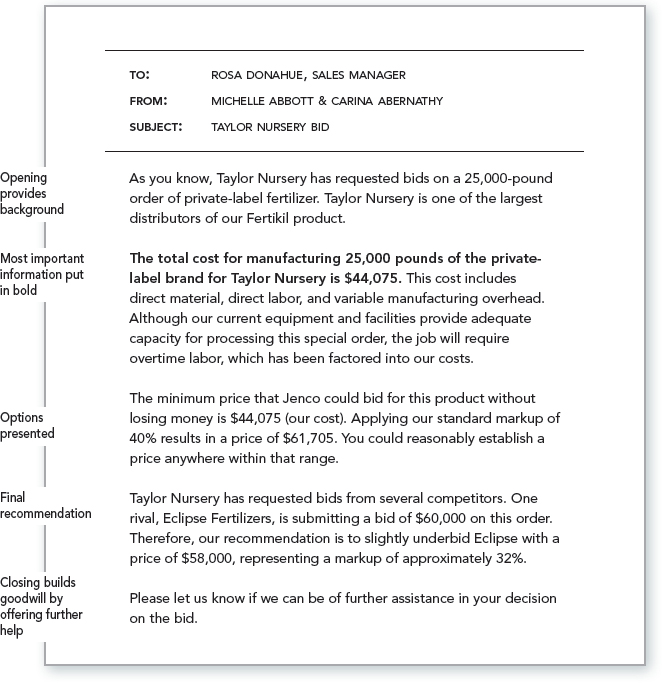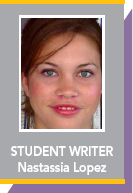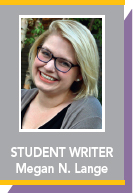23b Writing texts for business
Contents:
Writing a business memo
Writing a cover letter or letter of inquiry
Writing a résumé
Quick Help: Guidelines for writing more effective memos and business email
Quick Help: Guidelines for effective business correspondence
Video Prompt: Writing for the real world
Tutorial: Job search and personal branding
Writing assignments in business classes serve two related functions. While their immediate goal is to help you master the theory and practice of business, these assignments also prepare you for the kinds of writing that you will face in the world of work. For this reason, students in every discipline need to know how to write effective business documents such as memos, emails, letters, résumés, and reports.
Business writing tends to use conventional formats and to follow the conventions of standard written English. When you write to employers or prospective employers, stick to more formal communication unless you have a very good reason to do otherwise.
Remember that much or all of the writing you do at work is essentially public and that employers have easy access to email written by employees. (For more about email, see 1f.) As always, it’s best to use discretion and caution in all on-
 Writing a business memo
Writing a business memo
Memos are a common form of print or electronic correspondence sent within and between organizations. Memos tend to be brief, often dealing with only one subject.
As with any writing, consider the audience for your memo carefully. Make sure to include everyone who might need the information, but be cautious about sharing it too widely, especially when the information in your document may be sensitive.

Following is a memo, written by student writers Michelle Abbott and Carina Abernathy, that presents an analysis and recommendation to help an employer make a decision. (Photos © Michelle Abbott and Carina Abernathy)

 Writing a cover letter or letter of inquiry
Writing a cover letter or letter of inquiry
When you send a business or professional letter, you are writing either as an individual or as a representative of an organization. In either case, and regardless of your purpose, a business letter should follow certain conventions.
A cover letter often accompanies a résumé. The purpose of a cover letter is to demonstrate how the experiences and skills you outline in your résumé have prepared you for a particular job. (A letter of inquiry does similar work, but the writer typically asks more generally about openings or job leads.) Remember to focus, then, on how you can benefit the company, not how the company can help you. A well-
If you are posting a cover letter to accompany an online application, you will probably provide your contact information elsewhere, and you may not know the address (or name or title) of the person who will ultimately read the letter. The basic contents, however, will be the same whether you print and mail a letter or post it online.

The following cover letter was written (for print) by student Nastassia Lopez. (Photo © Nastassia Lopez)

 Writing a résumé
Writing a résumé
While a cover letter usually emphasizes specific parts of the résumé, telling how your background is suited to a particular job, a résumé summarizes your experience and qualifications and provides support for your letter. An effective résumé is brief, usually one or two pages.
Research shows that employers generally spend less than a minute reading a résumé. Remember that they are interested not in what they can do for you but what you can do for them. They expect a résumé to be formatted neatly, and your aim is to use clear headings and adequate spacing that will make it easy to read.
A well-
Your résumé may be arranged chronologically (from most to least recent) or functionally (based on skill or expertise). Include the following information:
Name, address, phone number, email address. You may also want to include links to a career profile page or personal Web site, and, if the content is professionally appropriate, to social media content such as a Twitter feed.
Educational background. Include degrees, diplomas, majors, and special programs or courses that pertain to your field of interest.
Work experience. Identify each job—
Skills, personal interests, activities, awards, and honors.
References. Most writers simply say that references are available on request.
Some applicants also include images in their résumés (see below). Make choices that seem appropriate for your specific situation.
Increasingly, job seekers are uploading résumés to a company Web site when applying for a position. In such cases, take special care to make sure that you have caught any errors or typos before submitting the form.

The following pages show student Megan N. Lange’s résumé in two formats, one in traditional print style and the other in a creative format optimized for digital presentation. Like many recent college graduates, she is considering possible career paths, and having two very different résumés prepared allows her to present herself appropriately to either traditional or more creative potential employers. To do a résumé activity, go to Résumés (Megan Lange). (Photo © Megan N. Lange)

